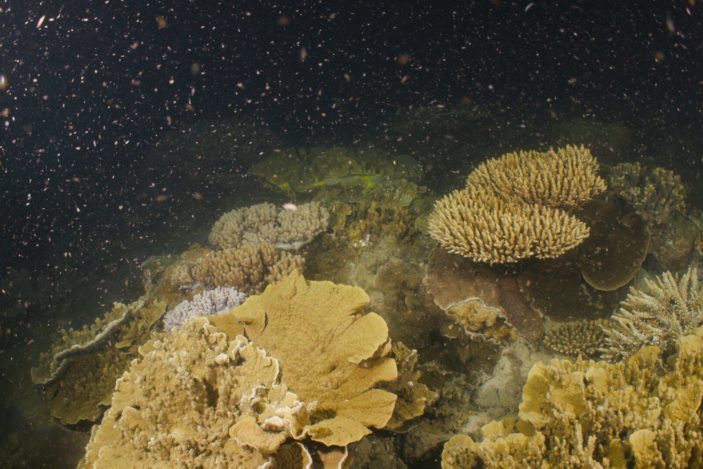Coral reefs are some of the most intricate and diverse ecosystems on our planet, often referred to as the “rainforests of the sea.”
These vibrant underwater worlds provide habitat, sustenance, and protection to an enormous array of marine life.
Fitzroy Island, nestled within the outer reef fringes of the Great Barrier Reef, holds a special place in this underwater realm, offering a unique opportunity to explore the science behind coral reefs, their significance, and the role Fitzroy Island plays in their conservation.
What is a coral reef?
Coral reefs are complex and delicately balanced ecosystems composed of a lot of living organisms, including coral polyps, fish, crustaceans, and algae. These ecosystems thrive in warm, nutrient-rich waters, like those found along the northeastern coast of Australia where Fitzroy Island is situated.
Coral polyps, tiny organisms resembling miniature sea anemones, form the foundation of the reef. Through a symbiotic relationship with algae known as zooxanthellae, corals receive nutrients and energy through photosynthesis, enabling them to build intricate calcium carbonate structures over time. This process creates the mesmerising coral formations that attract researchers, divers, and eco-enthusiasts to destinations like Fitzroy Island.
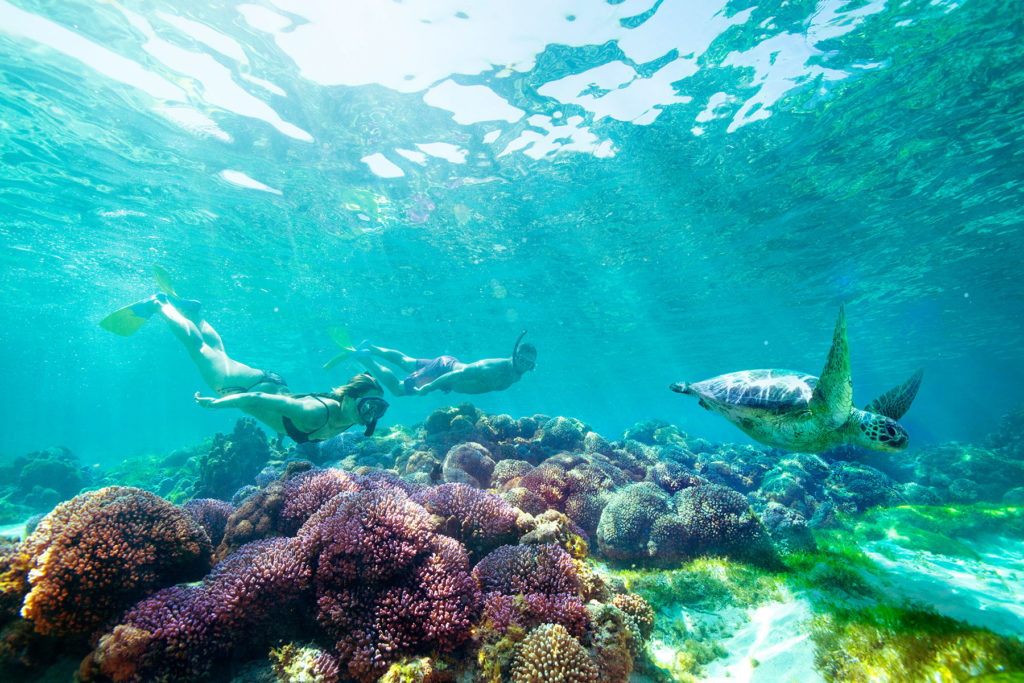
Why are coral reefs important?
We mentioned earlier how coral reefs are often referred to as the “rainforests of the sea” and this is due to their immense biodiversity and importance to marine ecosystems.
They provide a sanctuary for countless species, including fish, molluscs, and even sharks, acting as breeding grounds, feeding areas, and shelters.
Additionally, coral reefs serve as natural barriers, protecting coastlines from erosion and buffering the impact of storms and waves.
Beyond their ecological significance, coral reefs hold immense economic value. They support tourism, recreational activities, and fisheries that sustain coastal communities around the world.
Unfortunately, coral reefs face numerous threats, including climate change, pollution, overfishing, and physical damage from human activities.
There are various ecological efforts in practice with the aim of ensuring the longevity of the reef, which we will discuss shortly. But first, let’s talk about how the reef manages to regenerate and support itself.
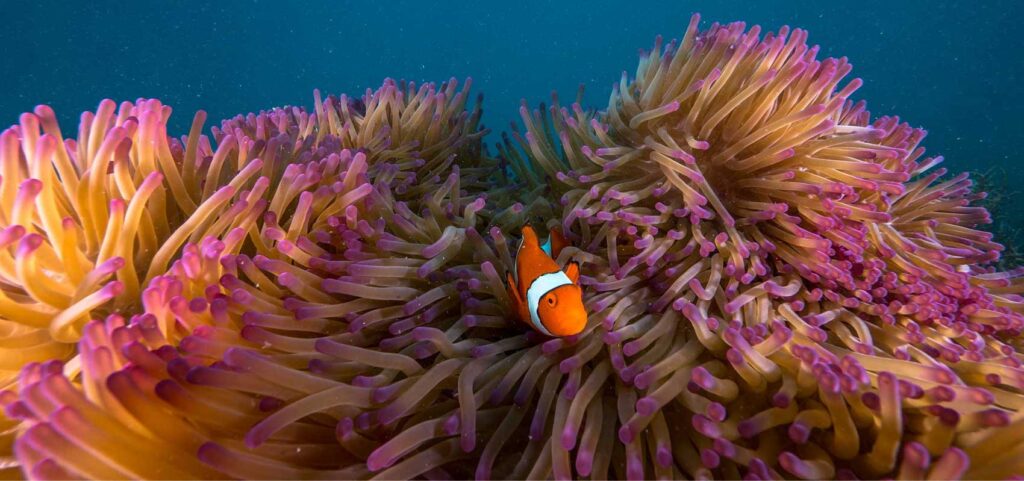
How does the reef survive?
Every year a breathtaking event known as coral spawning exemplifies the resilience and intricacy of the reef and its marine life. This mesmerising phenomenon is a testament to the reef’s vitality and the delicate dance of nature’s reproductive cycle.
What exactly is coral spawning?
Coral spawning is the synchronised release of eggs and sperm by corals, a vital process that contributes to the reef’s growth and survival. This phenomenon usually occurs a few nights after the full moon in November, during the warmer months of the Australian summer. The exact timing varies depending on factors such as water temperature, lunar phases, and local environmental conditions, so it can happen from anytime in November to December.
The process involves numerous coral colonies releasing their gametes simultaneously, creating a visually stunning underwater event that people flock to the area to witness.
While corals may seem like static structures, they are, in fact, a dynamic and interconnected community that relies on reproductive events like spawning for genetic diversity and the renewal of the reef ecosystem.
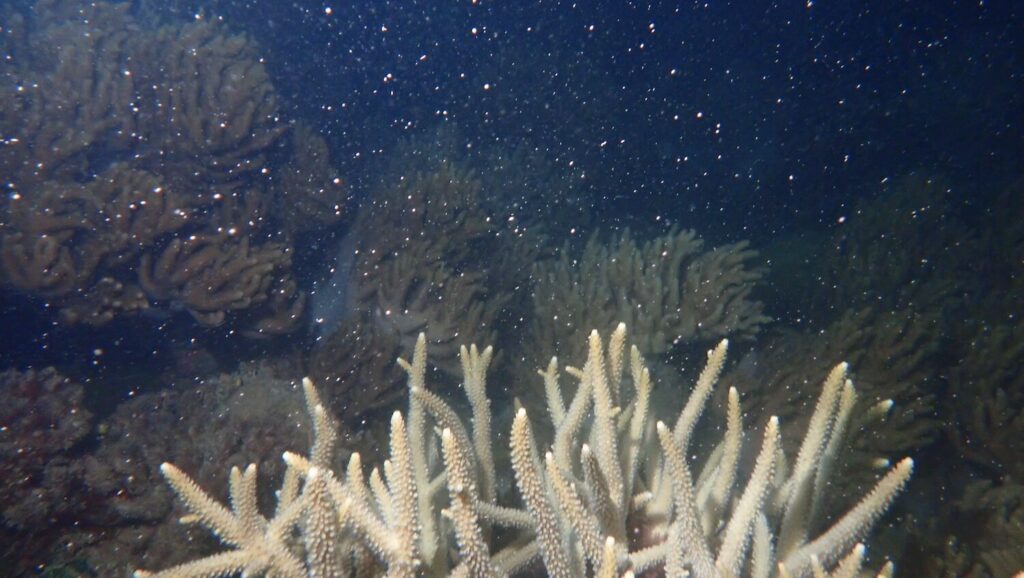
What happens during the coral spawning?
Coral polyps extend their delicate, tentacle-like arms, releasing millions of egg and sperm bundles into the water. These bundles resemble iridescent pearls, creating an otherworldly spectacle that captivates divers and marine biologists alike.
The timing of coral spawning is synchronised, allowing for the optimal chance of fertilisation. The released bundles rise to the water’s surface before breaking apart, releasing eggs and sperm into the water column. Here, the currents help disperse and mix the genetic material, maximizing the potential for successful fertilization and genetic diversity among coral populations.
Genetic diversity resulting from successful spawning events ensures that the reef’s inhabitants have a better chance of adapting to changing environmental conditions, such as rising sea temperatures and ocean acidification.
Coral larvae produced during spawning settle on suitable substrates, eventually forming new coral colonies. This ongoing cycle of birth and growth helps rejuvenate the reef and counteracts the natural processes of decay and damage.
Fitzroy Island and coral reef conservation
Fitzroy Island, nestled within the Great Barrier Reef, serves as a prime location for observing and studying coral spawning. Its unique ecosystem contributes to the collective knowledge about this awe-inspiring natural phenomenon, shedding light on the intricate relationships that sustain coral reefs.
The island is also home to a number of coral nurseries to aid in the Reef Restoration project. Small portions of coral are removed from the reef and nurtured in the coral nurseries to grow and develop new corals. The new corals are then replanted back into the reef to help create more coral reefs.
If you would like to learn more about the Reef Restoration program, read this article.
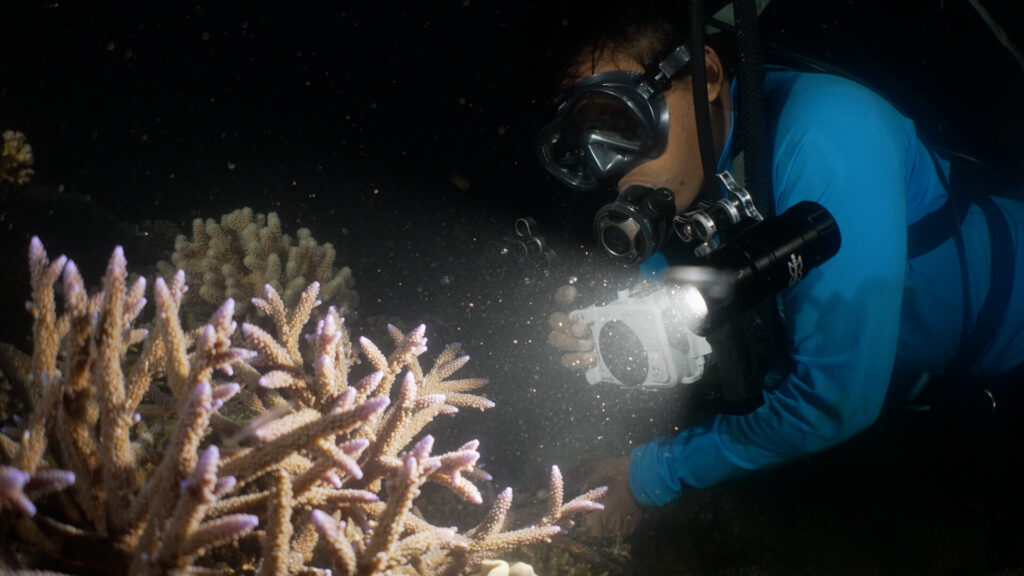
Discover coral reefs at Fitzroy Island
Fitzroy Island offers a captivating gateway into the fascinating world of coral reefs, where science and conservation intersect. Its unique ecosystem showcases the resilience and vulnerability of these marine wonders, prompting us to appreciate their intricate beauty and recognize the urgency of their protection.
If you’re interested in exploring the marine world of the Great Barrier Reef, visit Fitzroy Island today.


